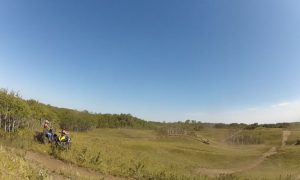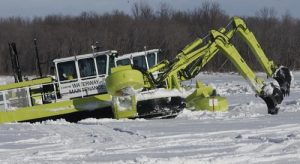Province changes Castle Parks Draft Managment Plan after overwhelming feedback
Lethbridge News NOW

LETHBRIDGE – The push-back from the rallies, the protests and the letter- writing campaigns seems to have worked, at least to a certain extent.
In a stunning about-face, Environment Minister Shannon Phillips says the province is changing the initial Castle Parks Draft Management Plan to include a number of new initiatives, along with a consultation process with the public and stakeholders that will begin next week.
The details of the public consultation process have not yet been announced, however Phillips says it will begin somewhere in southwestern Alberta March 8th.
“There will be a number (of sessions). Because we are looking at trail planning, in the Porcupine and Livingstone’s two areas that are going to be public land use zones, in addition to how they relate to the next five years within the Castle, it will be quite a long process. I anticipate it will take at least the summer if not longer. There will be a very frequent engagement with communtities and people who make their livelihood in the area. Landowners, ranchers, and the recreation groups.”
Many Off Highway Vehicle recreation groups have been calling for an extention to the 60- day feedback window on the draft managment plan, saying the comment period is far too short.
That window has now been extended 30 days, until April 19th.
A number of changes to the actual plan are also being implemented, including:
1) Allowing hunters access to trail networks to make sure they can safely get in and out of the area and recover game safely.
2) Working with grazing permit holders to allow them to be managed by rangelands operations staff. A meeting with ranchers in the Castle area will be held Friday, March 3rd.
3) Ensuring fish recovery strategies and protection of the Cutthroat and Bulltrout fish populations.
4) Allowing the elderly and those with disabilities access to the park with special infrastructure investments.
5) The maintenance of northern access routes into the parks from the Crowsnest Pass.
6) No changes to OHV trail access this year (2017). There will be a focus on closing illegal trails and creating proper signage in the parks. The province will work with OHV groups on planning and ensuring the existing infrastructure is EITHER moved OR maintained as the years go on.
7) Exploring the effects of summer versus winter OHV use with the Alberta Snowmobile Association and government scientists to ensure trail planning proceeds accordingly.
8) Increased enforcement and education in the parks.
Crowsnest Pass Quad Squad President Gary Clark is shocked and pleased with the announcement; something that he says his group has been asking for, since 2003.
“We were shocked at first when OHV use was disallowed, when we were told that OHV use would be allowed. But at the same time we also thought we put what we thought were very good submissions forward. This shows that we can properly control OHV use, which quite frankly, was running a little rampant …. and we can control it and have a good balance with the environment and at the same time keep tourism alive in southwestern Alberta.”
The only thing Clark says should be explored is a permit -type system; something many groups have also been advocating for decades. The important thing, he emphasizes, would be not to put the money from that kind of system into general revenue, “so that you can spend that money on maintaining the trails and building the bridges over the waters to protect the fish habitat, and move bad trails away from the waterways. It would be nice to have a steady source of funding.”
The province is investing $20 million dollars in the Castle Parks over 4 years. Phillips says in the coming weeks and months, more details on capital infrastructure and improvements will also be announced.



 We had over 25 members attend. This session was a great start to learning what we as a club require and how to program and download maps as well as fine tuning our GPS to our personal needs. If anyone has any questions on their own GPS or would like any further information on how to use or buy a GPS to suit their needs, please contact Nick Lisney at Cabela’s. He will spend time in the store with anyone interested on a more personal level. Thank you for making our first event of this king a great success!
We had over 25 members attend. This session was a great start to learning what we as a club require and how to program and download maps as well as fine tuning our GPS to our personal needs. If anyone has any questions on their own GPS or would like any further information on how to use or buy a GPS to suit their needs, please contact Nick Lisney at Cabela’s. He will spend time in the store with anyone interested on a more personal level. Thank you for making our first event of this king a great success!



